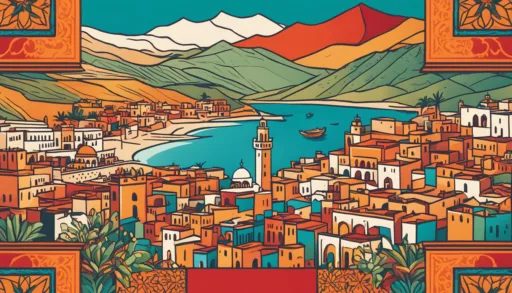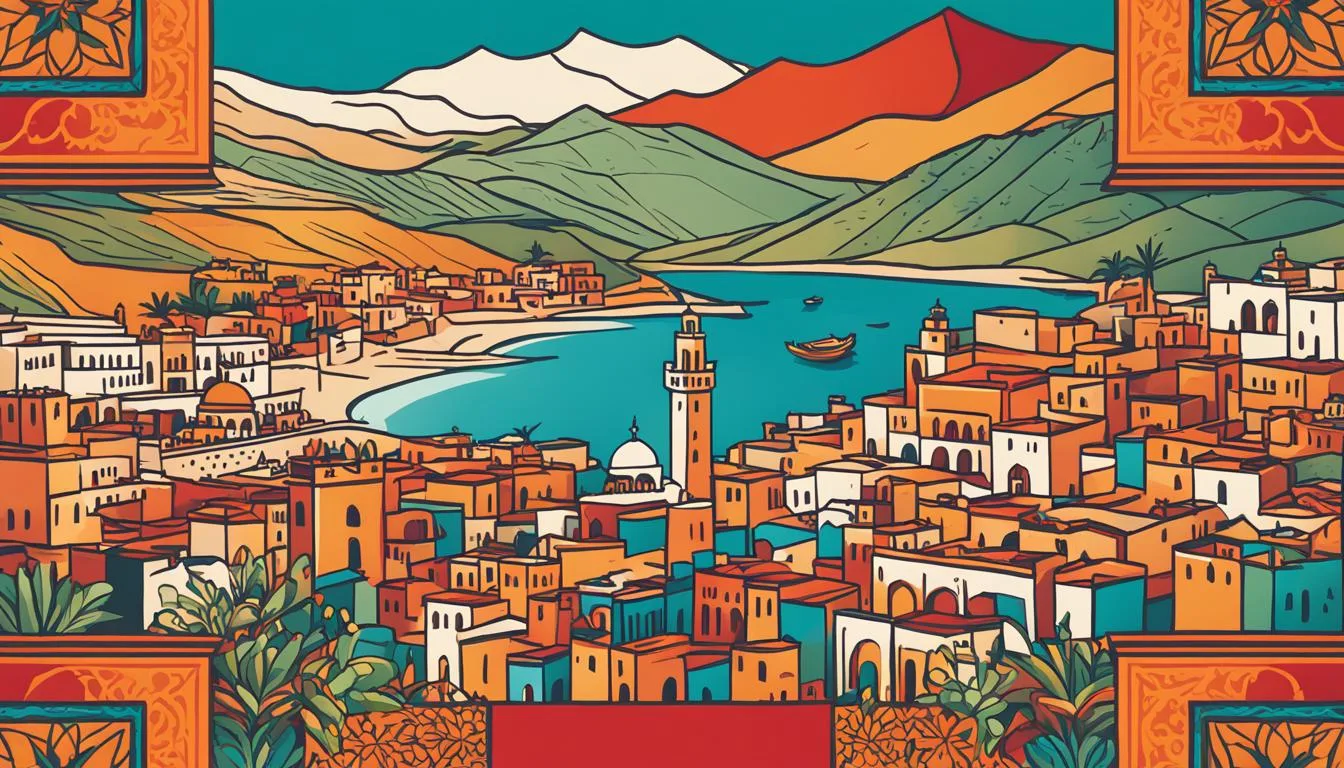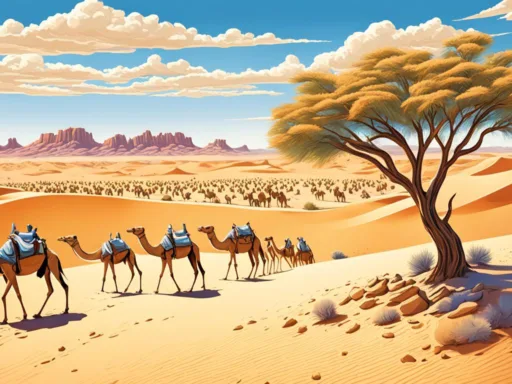Have you ever wondered when the bustling markets, majestic mountains, and ancient medinas of Morocco are at their peak of magic and allure? What if the ideal time to visit this enchanting kingdom is not when you’d typically expect? Morocco’s travel seasons are as diverse as its landscapes, and pinpointing the best time to visit Morocco may challenge your preconceived travel plans. From the cool breezes of January to the warm embrace of summer nights, every ideal month for Morocco travel offers an extraordinary palette of experiences.
Imagine wandering through vibrant markets in Morocco, the air filled with a rich tapestry of spices and colors. Or ascending the rugged terrains of the mountains in Morocco, with each step unveiling panoramic vistas and the whispers of ancient Berber tales. And consider getting lost in time within the labyrinthine medinas in Morocco, where every corner tells a story. Our comprehensive Morocco weather guide will lead you through the country’s seasonal rhythms to find your perfect Moroccan moment.
Key Takeaways
- Identify the peak and off-peak Morocco travel seasons to plan your trip according to your preferences.
- Recognize how the ideal months for Morocco travel vary by region and interest for tailored experiences.
- Learn about the climate changes and how a comprehensive Morocco weather guide can enhance your travel experience.
- Discover when to immerse yourself in the unique cultural events that take place in markets, mountains, and medinas across Morocco.
- Unravel the secrets of when to find fewer crowds and better deals during your travels through this North African gem.
Best Time to Visit Morocco: A Seasonal Guide
Discovering the idyllic periods for travel to Morocco hinges on a blend of factors including one’s preference for cultural events, climate, and personal comfort. To prioritize your journey, it’s crucial to align with the country’s peak season or seek the serenity of off-peak travel.
Embracing Autumn’s Awe: September to November
The autumn months in Morocco present an impeccable balance of temperature and tourism, making it a part of the peak season in Morocco. Travelers are afforded the opportunity to revel in the outdoor splendors without the summer’s oppressive heat. The Imilchil Marriage Festival is especially enchanting during this time.
The Spring Splendor: March to April
Spring is synonymous with a colorful burst of wildflowers across the Moroccan landscape. It’s an impeccable time for discovering historical landmarks in a climate that is both temperate and inviting. Festivals like the International Nomad Festival and the Sufi Festival offer visitors an authentic glimpse into the heart of Moroccan culture.
Summertime Coastal Retreats: June to August
For those looking to escape higher temperatures, the seaside beckons during the summer months in Morocco. The coastal regions, with their laid-back atmospheres, make off-peak travel to Morocco a refreshing experience. The Gnaoua Music Festival and the Festival of World Sacred Music are highlights not to be missed.
Winter Wonders: December to February
Morocco weather guide sources often cite winter as a quieter yet vibrant time to visit, especially for those who fancy fewer crowds and gentle exploration. With Yennayer, the Amazigh new year, and the possibility of camping under Saharan stars, winter offers a unique blend of cultural immersion and cooler climate enjoyment.
Selecting when to go to Morocco is a personal decision that can be greatly enhanced by planning around these seasonal insights. Each time of year holds its allure, ensuring that every trip to this magical country is laden with potential for both adventure and relaxation.
Cultural Highlights and Festivities
Morocco is renowned for its vibrant culture and year-round festivals. Each season brings new reasons why it’s the perfect time for a trip to Morocco. From spiritual ceremonies to jubilant street art, the country is a tapestry of colorful traditions and celebrations worth experiencing. Here’s your traveler’s guide to the cultural festivities in Morocco, promising an authentic immersion into the heart of Moroccan heritage.
Ramadan in Morocco: A Peaceful Sojourn
Ramadan offers a unique glimpse into the spiritual side of Morocco. As the country observes this holy month, travelers can witness the transformation of the bustling streets at dusk into serene spaces for evening prayers and the breaking of the fast, known as iftar. Joining in these moments provides invaluable insights into the communal spirit of the Moroccan people.
Yennayer: The Amazigh New Year
In the peaks of the High Atlas Mountains, the Amazigh communities celebrate Yennayer, their New Year, with great enthusiasm. Festivities abound with traditional feasts and performances, all reflecting a deep reverence for nature – an experience that resonates with anyone seeking the cultural richness underlying Morocco travel seasons.
Festival Seasons: Art and Music in Moroccan Streets
The lively streets of Morocco serve as the stage for various art and music festivals, particularly during the spring and autumn. These events, including the mystical Sufi Festival in Fes and the fragrant Festival of the Roses, beckon travelers from around the world. Visitors are encouraged to immerse themselves in the festivities, lending a hand in celebrating the country’s harvest and spiritual artistry.

| Month | Festival | Location | Highlights |
|---|---|---|---|
| January | Yennayer | High Atlas Mountains | Amazigh New Year celebrations with traditional foods and performances |
| April | Sufi Festival | Fes | Philosophical and musical Sufism performances in a historical city |
| May | Festival of the Roses | Kelaat M’Gouna | Rose-harvesting ceremonies and a vibrant parade celebrating local traditions |
Whether you find serenity in the contemplative atmosphere of Ramadan, joy in the New Year festivities of Yennayer, or inspiration among the music and art of Morocco’s street festivals, visiting during these special times will leave you with an authentic and deeply personal connection to Morocco’s rich and diverse culture.
Exploring Morocco’s Diverse Climates
Embarking on a journey to Morocco, one can expect to experience a tapestry of Morocco climate zones, each with unique characteristics that appeal to a variety of travel preferences. Whether you’re looking to bask in the sun along the Mediterranean shores or trek through the changing scenery of the Atlas Mountains, understanding the Morocco weather guide will enhance your travel plans significantly.
The Ideal months for Morocco travel largely depend on which part of the country’s diverse landscape you wish to explore. To help you determine the best time and place for your adventure, consider this breakdown of climate zones and their optimal visitation periods:
- Coastal Havens: Enjoy milder weather and beach days during summer in cities like Essaouira.
- Mountain Getaways: April, May, September, and October are perfect for trekking the Atlas and Rif Mountains.
- Desert Escapes: To witness the Sahara’s majesty, aim for the cooler nights of the shoulder seasons.
Given these varied environments, it’s beneficial for travelers to consult a month-by-month overview. The following table aligns each climate zone with the ideal months for Morocco travel, providing a clear guide to scheduling your trip.
| Climate Zone | Optimal Travel Months | Activities Suited |
|---|---|---|
| Mediterranean Coast | June – August | Beach relaxation, water sports |
| Atlas & Rif Mountains | April – May, September – October | Hiking, cultural exploration |
| Sahara Desert | March – April, October – November | Camel trekking, star gazing |
| Northern Cities & Inland | September – November, March – April | Historical site visits, food tours |
By integrating these insights into your itinerary, you can immerse yourself in the best of Morocco’s weather, landscapes, and cultural experiences.
Off-Peak Perks: When to Visit for Smaller Crowds
Embarking on off-peak travel to Morocco opens up a treasure trove of opportunities for those eager to immerse themselves in an authentic Moroccan ambiance with fewer distractions. From November to February, visitors are greeted with quiet calm in places usually bustling with tourists. Imagine wandering through Marrakech’s Jardin Majorelle or the ancient halls of Fez’s Bou Inania Madrasa without the usual throngs, allowing for a more thoughtful appreciation of Morocco’s rich heritage. This period promises not just tranquility, but also cooler weather, making it one of the ideal months for Morocco travel for those who prefer milder climates. Do remember, the nights in the desert and high altitudes can be brisk, so packing a few extra layers would be wise.
During off-peak months, the fusion of enticing travel deals and the ease of securing accommodations without the scramble evident during peak times unfolds as an unexpected bonus. You’ll not only stretch your budget further but also revel in an atmosphere more conducive to forging genuine connections with local Moroccans. Delve into engaging conversations over mint tea, or learn about traditional Berber rug-weaving without the rush of peak tourism interrupting the moment. These subtle experiences often turn into the most memorable highlights of one’s journey, offering illuminating insights into the everyday lives of Morocco’s welcoming inhabitants.
For those plotting a serene escape, June stands out as a precious gem. Before the mercury climbs, this month ushers in a peaceful prelude to the Moroccan summer. Wanderlust souls looking for the best time to visit Morocco yet longing for solitude will find reprieve during this season, striking a perfect balance between warm weather and relaxed exploration. Whether it’s meandering through spice-scented souks or soaking in the architectural splendor of the centuries-old medinas, June’s soft whisper of off-peak travel is Morocco’s subtle invitation to experience the country’s cultural richness undisturbed.






